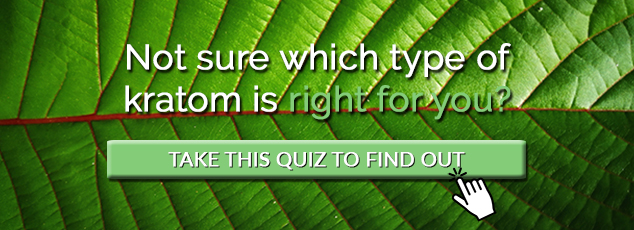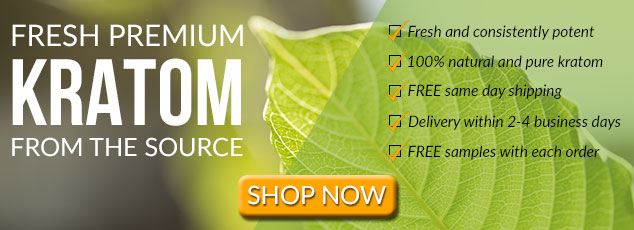Kratom provides diverse effects and benefits which is one of its most astonishing features. This is due to kratom alkaloids, natural chemical compounds present in Mitragyna speciosa leaves.
Users report feeling differently after using different strains and strain varieties. And even different doses of the same strain can have one experience distinct effects. This occurs due to the different alkaloids that are present in the kratom leaves as well as their concentration in each individual strain.
While many kratom lovers know that alkaloids are beneficial and responsible for kratom effects, most don’t know their specifics and they actually work.
What Are Alkaloids?
Just like any other living organism, plants contain natural chemicals. In plants these plant chemicals also known as phytochemicals.
There are different kinds of phytochemicals such as carbohydrates, lipids, amino acids, proteins, flavonoids, polyphenols, tannins, and many more. Alkaloids are one of them.
Alkaloids are naturally occurring nitrogen-containing molecules in plants and fungi. Scientists hypothesize that they protect plants from insects and animals. However, it’s not entirely clear what the purpose of alkaloids in plants is.
What we do know is that they have powerful medicinal as well as other properties, even in small quantities. They have unique effects on the human body and provide diverse effects and health benefits.
Alkaloids can treat pain, inflammation, immune disorders, and even more. Nonetheless, some can also be toxic.
Because of this, alkaloids are popular in conventional medicine and other industries. Some of the popular alkaloids the effects of which you may be familiar with are:
- caffeine – alkaloid with stimulant properties found in coffee and cocoa beans and tea plant leaves,
- ephedrine – it’s a stimulant used in asthma medication and to prevent blood pressure drop during anesthesia,
- quinine – alkaloid used in malaria medication,
- morphine – the primary alkaloid in the opium poppy with strong analgesic properties,
- nicotine – stimulant alkaloid present in tobacco.
The Main Types of Kratom Alkaloids
It’s believed that kratom’s leaves have at least 25 different alkaloids. Other hypothesize there are at least 40 or even more. But, there have only been limited scientific studies on kratom thus far to confirm the exact number.
While there are many different alkaloids in kratom, two of the most powerful ones are mitragynine and 7-hydroxymitragynine. Both of these alkaloids are different in terms of the benefits that they provide. But, they both are responsible for pain relief as well as opioid withdrawal relieving effects.
The variety and amount of kratom alkaloids both depend on various factors. These can be the type of strain, the maturity of the leaves, where and in what conditions it grows, how it is harvested, and more.
For example, younger kratom leaves have a higher mitragynine concentration and the amount lowers as the leaves mature. The opposite is true about 7-hydroxymitragynine. Young leaves have less 7-hydroxymitragynine and the amount increases as the leaves mature.
So, the younger leaves tend to have pale green veins and stems. As the amount of mitragynine lowers and that of 7-hydroxymitragynine increases, the stems and veins gradually turn green and then red. As a result, all three – red, green, and white vein leaves can be present on the same tree and mature in a similar way to how bell peppers do, turning from green to yellow and then red.
Factors such as the amount of sunlight can also affect the concentration of the alkaloids. For instance, leaves that develop during the rainier and less sunny periods of the year tend to be white or green-veined.
This change in alkaloid concentration does not only affect the appearance of the leaves but also the effects that they produce.
Mitragynine and Its Effects
Mitragynine is the most abundant of all alkaloids in the kratom leaves, making up around 60% or more of the total content of kratom alkaloids. It is primarily responsible for the stimulant effects of kratom. That’s why it is found in higher amounts in green-vein and white-vein strains.
Mitragynine’s stimulating effects are much smoother and much more stable than those of other stimulating substances, such as caffeine.
Yet, stimulation is not the only benefit of this alkaloid. It has a variety of different properties.
Mitragynine effects slightly vary from person to person. It mostly depends on their sensitivity towards kratom. Nonetheless, its overall effects are quite consistent. A few of them are:
- Anti-malarial
- Anti-tussive (relieving or stopping cough altogether)
- Anti-diarrheal
- Stimulation
- Pain relief
While mitragynine provides pain-relieving properties, they are lower than those of 7-hydroxymitragynine.
Also, its effects can vary according to how large a dose is. Lower dosages generally provide more stimulating effects, while higher dosages result in less stimulating, but rather more pain-relieving and relaxing effects.
Due to its versatile nature, mitragynine still needs to be scientifically studied in more depth to understand the full breadth of its potential.

7-Hydroxymitragynine and Its Effects
7-hydroxymitragynine is the fourth most abundant alkaloid in kratom. It is more concentrated in sedating kratom types, such as red-vein strains. It is less versatile in terms of its properties and effects and is present in much lower amounts than mitragynine. However, it is a lot more potent than mitragynine.
In fact, it is the most potent alkaloid found in kratom.
Some experts believe 7-hydroxymitragynine may even be 30 times stronger than mitragynine. Studies have indicated that it is also 13 times stronger than morphine.
The most prominent effects of 7-hydroxymitragynine include:
- Powerful pain-killing effects
- Opiate withdrawal relief
Other Kratom Alkaloids
As we already know, kratom has a lot more than just these two alkaloids. Though there are numerous alkaloids present in its leaves, some of these need to be studied in more detail to know their full potential
Below, you’ll find a few of the important alkaloids that are inside kratom leaves. Although they appear in kratom in much smaller quantities, they are working together with each other to create the unique effects of kratom.
- Ajmalicine is a muscle relaxant as well as an anticoagulant (a blood thinner that can prevent blood clots).
- Ciliaphylline works as a sturdy analgesic.
- Corynoxeine serves as a calcium channel blocker. It helps to relax blood vessels and lower blood pressure.
- Corynoxine helps dopamine move throughout the body.
- Corynantheidine is an antagonist of the opiate receptors. It blocks opioid receptors from responding to opioids and endorphins. That can help with opioid addiction.
- Epicatechin has numerous functions. It is an anti-leukemic alkaloid. In addition, it also has anti-cancer, anti-oxidant, anti-inflammatory and antiviral properties. It also helps to prevent fat cells from clogging the arteries and controls blood sugar levels.
- Paynantheine is a muscle relaxant.
- Speciophylline has an anti-leukemic action.
- Speciogynine gently releases the muscles.
- Tetrahydroalstonine has an anti-adrenergic (can help with anxiety, heart disease, and high blood pressure) and hypoglycemic activity (can lower blood sugar).
Note that these are only a few of the alkaloids present in the leaves that we know more about.
Even though the effects and benefits of kratom can be life-changing, we may only be scratching the surface when it comes to understanding kratom’s full potential.

More Studies on Kratom Alkaloids
Sadly, scientific research on kratom is still quite limited at this time, preventing us from knowing the full potential of the herb.
Yet, more are being carried out.
The University of Florida College of Pharmacy is where Christopher McCurdy, the pioneer of kratom research works. He was the person to first uncover and perform studies on kratom in the United States.
NIDA (National Institute on Drug Abuse) has awarded Mr. McCurdy and his team two grants to study kratom, its alkaloids, and their effects. They are worth $6.9 million and give the team seven total years for this research.
The team has already come up with some positive conclusions, suggesting that kratom could treat opioid withdrawal and addiction. While kratom users already verify that from personal experience, having scientific studies back that up could improve the general reputation of kratom and help keep it legal and accessible.
Common Misconceptions about Kratom Alkaloids
Much attention is drawn to the fact that kratom alkaloids hit the same receptors as opioids. That does not mean that the kratom alkaloids themselves are opioids. But rather that they target the same receptors that opioids do.
Opioid use comes with a dangerous side effect of affecting the user’s respiratory system. It slows down the breathing and can result in death, especially if used improperly and irresponsibly.
Kratom does not do that. It causes minimal respiratory depression that doesn’t endanger human life, and Mr. McCurdy’s team’s research has proven that.
As a matter of fact, kratom is actually an opioid antagonist. It can help to minimize opioid withdrawal symptoms as well as overcome opioid addiction.
Chemically, the structure of alkaloids resembles that of psychedelic drugs. However, kratom users do not actually experience psychedelic effects.
Instead, they feel pain relief and euphoria among other effects and benefits. Ones that are already discussed above.
What kratom strains have you used and what effects have you experienced?
Don’t hesitate to share your thoughts and experiences in the comments below.



Leave a Reply